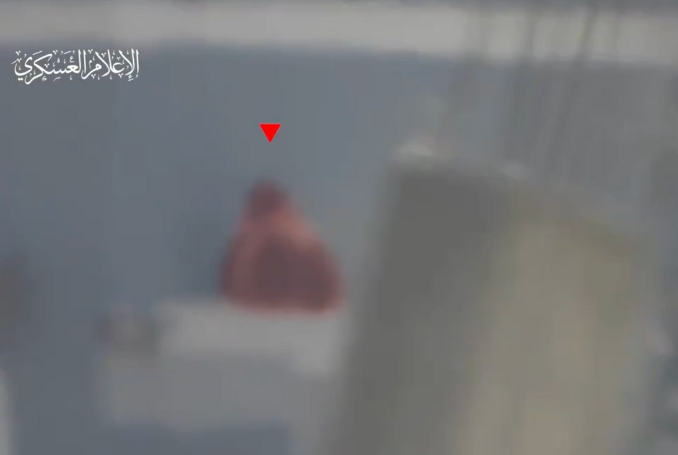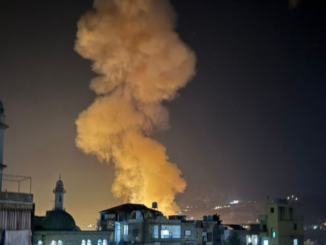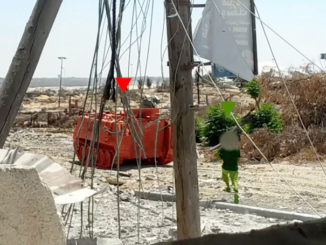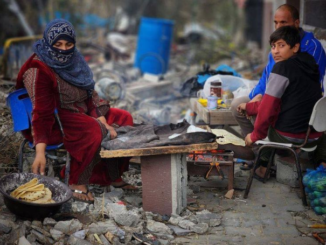
The Al-Qassam Brigades, the military wing of the Palestinian Movement Hamas, announced on Tuesday that it had set up a tight ambush for the Israeli army in the Rafah area.
The Brigades said in a statement on its Telegram account that its fighters destroyed two Nimr personnel carriers during the ambush and that it had targeted two Merkava tanks on George Street, east of Rafah.
The group added that its fighters monitored the landing of Israeli helicopters that evacuated the dead and wounded soldiers, noting that clashes were still continuing in the area.
Earlier on Tuesday, Israeli media reported that a helicopter carrying wounded soldiers had arrived at the Belinson Hospital in Petah Tikva, east of Tel Aviv.
‘Difficult Incident’
The Al-Qassam Brigades announced on Monday that it detonated two anti-personnel and anti-vehicle devices in an Israeli engineering force in the area of Zalata and that it had killed and wounded a number of Israeli soldiers.
It also announced two similar operations east of Khan Yunis and in the neighborhood of Tel Al-Hawa southwest of Gaza City.
For its part, Israeli media reported a “difficult security incident” in Rafah, while Army Radio said seven soldiers were wounded in an explosion in the southern Gaza Strip, 4 of them in serious condition.
Qassam al-Ghoul sniper vs IDF soldier-in-a-window in Rafah. [Qassam Brigades 4/8] pic.twitter.com/IqaWEYFWei
— Jon Elmer (@jonelmer) August 4, 2024
The Israeli army spokesman also said four reservists were seriously wounded in a battle in the southern Gaza Strip.
22 Killed
In other developments, Al Jazeera correspondent reported that the areas of Al-Mughraqa, Al-Zahra and the northern Nuseirat camp in the central Gaza Strip were subjected to heavy Israeli artillery shelling on Tuesday morning.
The correspondent said that Israeli warplanes launched raids east of Deir al-Balah, adding that the bodies of five Palestinians were recovered from the east of the Al-Bureij refugee camp in the central Gaza Strip.
Israeli artillery had reportedly shelled the vicinity of the Islamic Complex in Al-Sabra neighborhood, south of Gaza City.
In the northern Gaza Strip, Israeli occupation bombed areas northwest of Beit Laiyha.
In the south, the Israeli army shelled the western areas of Rafah and blew up residential buildings east of the city.
The Palestinian Red Crescent said it was working to recover dozens of bodies from the eastern areas of Khan Younis and north of Rafah.
22 Palestinians had been killed in continuous Israeli raids on different areas in the Gaza Strip since Monday morning, medical sources in Gaza told Al-Jazeera.
Ongoing Genocide
Flouting a UN Security Council resolution demanding an immediate ceasefire, Israel has faced international condemnation amid its continued brutal offensive on Gaza.
Currently on trial before the International Court of Justice for genocide against Palestinians, Israel has been waging a devastating war on Gaza since October 7.
According to Gaza’s Ministry of Health, 39,624 Palestinians have been killed, and 91,469 wounded in Israel’s ongoing genocide in Gaza starting on October 7.
Moreover, at least 11,000 people are unaccounted for, presumed dead under the rubble of their homes throughout the Strip.
Israel says that 1,200 soldiers and civilians were killed during the Al-Aqsa Flood Operation on October 7. Israeli media published reports suggesting that many Israelis were killed on that day by ‘friendly fire’.
Palestinian and international organizations say that the majority of those killed and wounded are women and children.
The Israeli war has resulted in an acute famine, mostly in northern Gaza, resulting in the death of many Palestinians, mostly children.
The Israeli aggression has also resulted in the forceful displacement of nearly two million people from all over the Gaza Strip, with the vast majority of the displaced forced into the densely crowded southern city of Rafah near the border with Egypt – in what has become Palestine’s largest mass exodus since the 1948 Nakba.
Later in the war, hundreds of thousands of Palestinians began moving from the south to central Gaza in a constant search for safety.
(PC, AJA)








